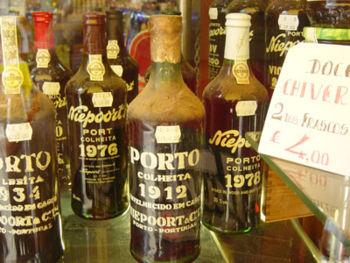Port (wine)
Port is a sweet, fortified wine produced in the Douro Valley in northern Portugal. It is commonly served as a dessert wine. It is named from the seaport city of Porto at the mouth of the Douro River, where much of the product was brought to market or for export to other countries in Europe from the Leixões docks. The Douro Valley where Port wine is produced was defined and established as a protected region, or appellation, in 1756. During that year, Marques de Pombal also laid down the initial regulation as to the production of port wine.
Port originates from grapes grown in the Douro Valley, which after harvesting in September are subsequently fortified with distilled grape spirits during fermentation to boost alcohol content. The grape spirits which are added to the fermenting have a strong alcohol content and is tasteless and aromaless. When the grape spirit is added, most yeast ceases activity before it has transformed all of the grape sugar into alcohol. This gives port its sweet taste.
Bibliography
- Daynes G (1979) Gout and port.Br Med J.2:669 [PMID 497780] ].
- Healey LA 1975) Port wine and the gout. Arthritis Rheum 18:659-62[PMID: 1106430].
